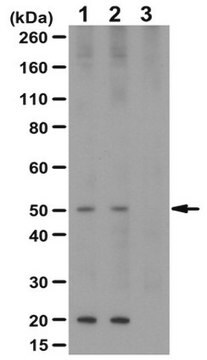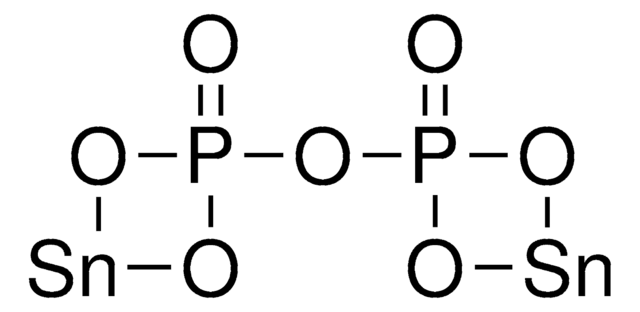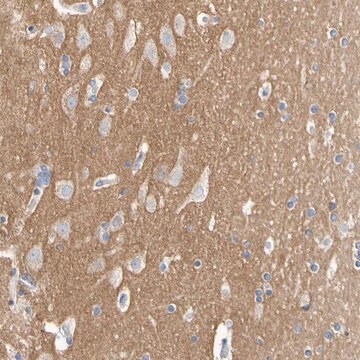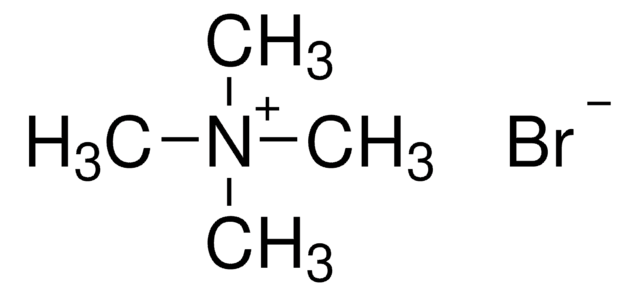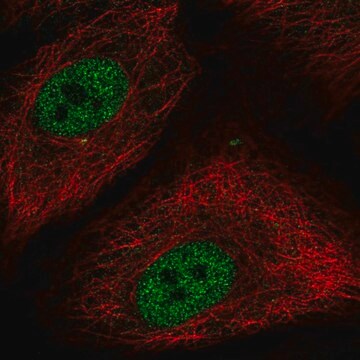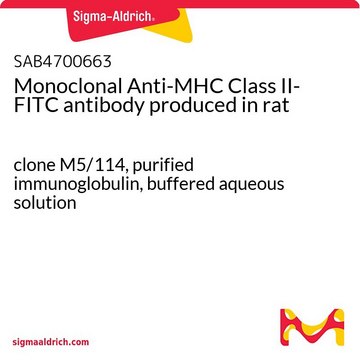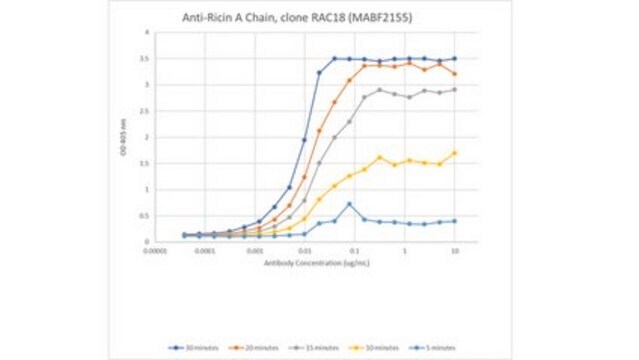ABN1379
Anti-TAG-1 Antibody
serum, from rabbit
Synonim(y):
Contactin-2, TAG-1, Axonal glycoprotein TAG-1, Axonin-1, Transient axonal glycoprotein 1, TAX-1
About This Item
Polecane produkty
pochodzenie biologiczne
rabbit
Poziom jakości
forma przeciwciała
serum
rodzaj przeciwciała
primary antibodies
klon
polyclonal
reaktywność gatunkowa
rat, mouse
metody
immunocytochemistry: suitable
western blot: suitable
numer dostępu NCBI
numer dostępu UniProt
Warunki transportu
dry ice
docelowa modyfikacja potranslacyjna
unmodified
informacje o genach
mouse ... Cntn2(21367)
rat ... Cntn2(25356)
Opis ogólny
Immunogen
Zastosowanie
Immunocytochemistry Analysis: A representative lot detected a loss of TAG-1 immunoreactivity at the juxtaparanodal (JXP) region of teased sciatic nerves isolated from 4.1B−/− mice lacking the cytoskeletal adapter protein 4.1B (Horresh, I., et al. (2010). J. Neurosci. 30(7):2480–2489).
Neuroscience
Developmental Neuroscience
Jakość
Western Blotting Analysis: A 1:5,000 dilution of this antibody detected TAG-1 in 10 µg of mouse brain tissue lysate.
Opis wartości docelowych
Postać fizyczna
Przechowywanie i stabilność
Handling Recommendations: Upon receipt and prior to removing the cap, centrifuge the vial and gently mix the solution. Aliquot into microcentrifuge tubes and store at -20°C. Avoid repeated freeze/thaw cycles, which may damage IgG and affect product performance.
Inne uwagi
Oświadczenie o zrzeczeniu się odpowiedzialności
Nie możesz znaleźć właściwego produktu?
Wypróbuj nasz Narzędzie selektora produktów.
Kod klasy składowania
12 - Non Combustible Liquids
Klasa zagrożenia wodnego (WGK)
WGK 1
Temperatura zapłonu (°F)
Not applicable
Temperatura zapłonu (°C)
Not applicable
Certyfikaty analizy (CoA)
Poszukaj Certyfikaty analizy (CoA), wpisując numer partii/serii produktów. Numery serii i partii można znaleźć na etykiecie produktu po słowach „seria” lub „partia”.
Masz już ten produkt?
Dokumenty związane z niedawno zakupionymi produktami zostały zamieszczone w Bibliotece dokumentów.
Nasz zespół naukowców ma doświadczenie we wszystkich obszarach badań, w tym w naukach przyrodniczych, materiałoznawstwie, syntezie chemicznej, chromatografii, analityce i wielu innych dziedzinach.
Skontaktuj się z zespołem ds. pomocy technicznej